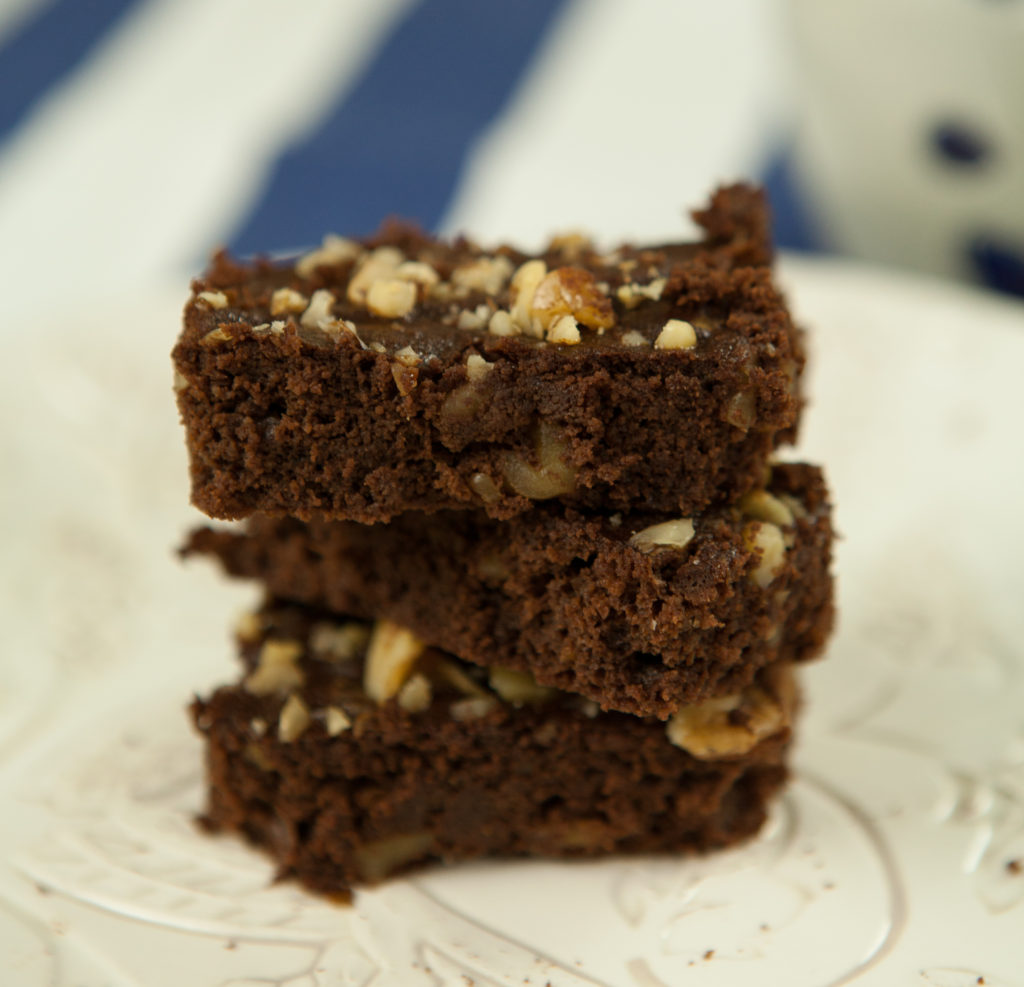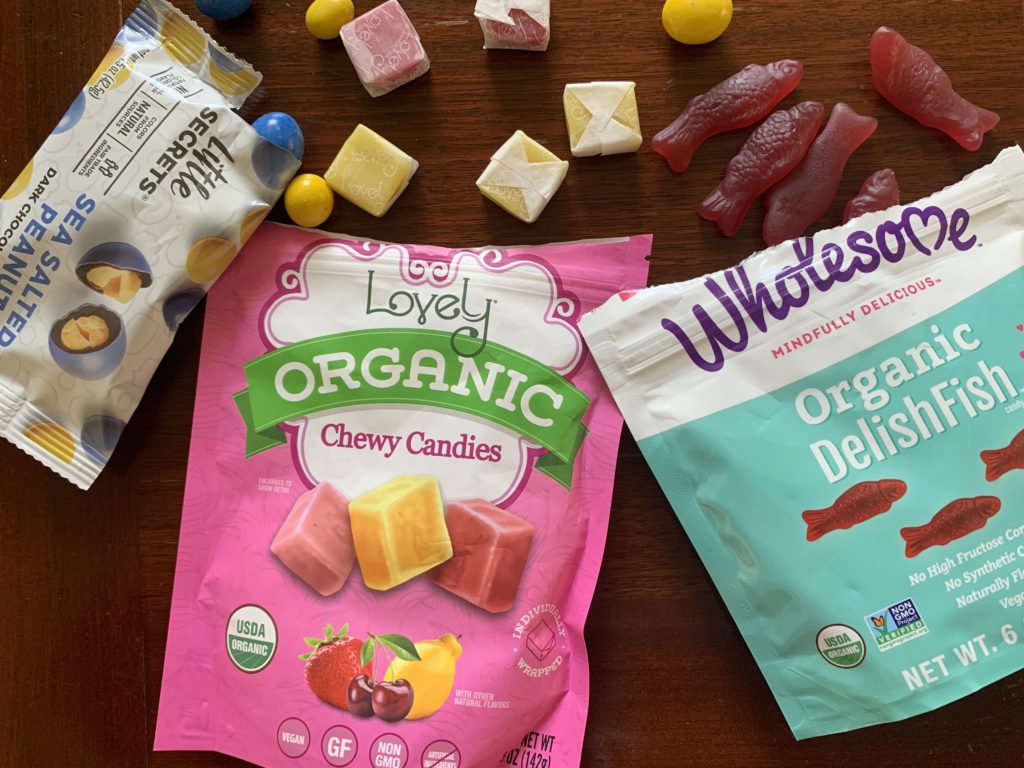 My family followed a near-zero -sugar diet for about 2.5 years for health reasons. I explain the science behind my choice in my cookbook, The Grain-Free, Sugar-Free, Dairy-Free Family Cookbook, but in summary, sugar is measurably inflammatory and is now being linked to the development of a variety of chronic conditions ranging from obesity and diabetes to Alzheimer’s and arthritis. In short, we’re eating entirely too much sugar and any approach at disease prevention warrants an investigation of the western diet.
My family followed a near-zero -sugar diet for about 2.5 years for health reasons. I explain the science behind my choice in my cookbook, The Grain-Free, Sugar-Free, Dairy-Free Family Cookbook, but in summary, sugar is measurably inflammatory and is now being linked to the development of a variety of chronic conditions ranging from obesity and diabetes to Alzheimer’s and arthritis. In short, we’re eating entirely too much sugar and any approach at disease prevention warrants an investigation of the western diet.
Focusing solely on the nutritional aspects of food worked perfectly for the first 4-5 years of my son’s life. He cared very little that our diet was different. He also has some severe food allergies which meant that it wasn’t such an abnormal thing for him to eat differently than most kids. But his budding awareness of the differences between the way that my family eats compared to the way that many of his peers eat leaves him with curiosities that will never be satisfied by a diet designed to prevent disease.
I’m now having to consider disease prevention along with all of the emotional facets of food – acceptance of differences, curiosity around new foods, the need to fit in with peers, and all of the other developmental progressions that come along with raising kind, healthy, and non-judgmental children. The big questions have now become, “how does avoidance of sugar play into health, but also emotional and social development, and how will my approach impact my children’s long-term relationship with food?” Unfortunately, I don’t have a crystal clear answer, but I’ve given this topic much consideration over the past few months, have been considering the ideas of others, and feel that I have a plan of attack (for the moment, anyway; I reserve the right to alter my approach at any time since that’s how parenting goes).
But before I share my ideas, I’d like to first be clear in that I wish I didn’t have to make allowances for excessive sweets because, without a doubt, we are a culture that is consuming entirely too much sugar and the result is a society plagued by chronic disease. I often hear people say that they don’t want to “demonize” sugar in fear of making sugar sound like a forbidden food, thus provoking rebellion, cravings, and binge eating. I agree that talking about foods in this way is an ineffective method when talking to children since they’re incapable of truly understanding the physiological consequences of a poor diet. The same is true for adults with disordered eating who need psychological support when it comes to eating habits. But for the average adult human, it’s important to understand that consuming excess sugar has health consequences. Rather than sugarcoat the truth, I’d like to offer strategies for management and empowerment, including nutrition education as to prevent blindly making choices that negatively impact our health.
Okay, so let me get down from my soap box and share some tactical approaches to establishing reasonable sugar limits for our children (and ourselves).
Limit Sugar Intake to Sweets Only
Countless foods available at the grocery store contain added sugars in places where you’d least expect it such as breads, crackers, ketchup, sauces, salad dressings, peanut butter, and numerous other foods. Sweetened beverages, including fruit juices, are a major source of added sugars, as are cereals, bars, and yogurts. The American Heart Association recommends limiting added sugar intake to no more than six teaspoons (24g) of sugar per day for children (less in young children), which can quickly add up when you’re consuming small amounts of sugar in every food you eat. Start reading labels and choosing brands that have no or low added sugars.
Sub in Homemade Sweets Made from Better Ingredients

Chocolate Walnut Brownies from “The Grain-Free, Sugar-Free, Dairy-Free Family Cookbook”
I realize that finding time to prepare sweets from scratch can be challenging, but being in control of the ingredients in your treats is hugely beneficial. Finding recipes that use dried dates as sweeteners is my personal preference since dates are a whole food ingredient with a legitimate nutritional profile and fiber to slow the movement of sugar into the blood stream. I don’t feel that these treats need to be limited as much as store-bought or sugar-laden treats making them a great option for kids who have an especially powerful sweet tooth.
You’ll find a number of date-sweetened recipes in my cookbook ranging from Chocolate Walnut Brownies with Chocolate Icing to Apple Spice Bundt Cake. You’d be surprised what you can do with a good blender and some dates. You can find other great recipes in No Sugar Still Sweet, a short ebook from Kacie Barnes and Heather Staller. Heather is a friend of a friend and just so happens to be one of my favorite people on Instagram (@heather.happykidskitchen) for her love of cooking and ability to make it fun for kids. What I love about their ebook is that it’s a succinct primer for anyone interested in reducing their children’s overall sugar intake in an approachable way. The ebook contains brief, yet thorough suggestions for reducing sugar intake, and is accompanied by 15 fruit-sweetened recipes for kids.
Add in Naturally Sweet Foods to Build a “Balance Point”
Years of health coaching has taught me that people are rarely interested in restricting their diets, especially when you suggest that they eliminate a food that brings them pleasure for one reason or another. Sugar is one of such foods. Teaching people to focus on addition rather than subtraction has proven to be a much more effective tactic in eliciting positive change.
Our bodies naturally crave sweet foods, which means we have to satisfy those cravings over time with healthier options. It’s a principal known as building a balance point. The idea is that we incorporate naturally sweet foods into our diets on a regular basis, which avoids intense cravings that can result in binge eating. You can add in some of the healthier sweets that I mentioned above, but my preference is to add in foods like sweet potatoes, winter squash, carrots, red peppers, and even onions. These naturally sweet foods help to control sweet cravings, even for kids. The other benefit to focusing on addition rather than subtraction is that we automatically crowd out undesirable foods. More space for naturally sweet foods means less space for some of those other things.
Don’t Talk About Calories as Being Bad; Talk About Food as Being Good
One of the unfortunate side effects of eating excess sugar is that elevated glucose levels will saturate our muscle’s energy storage units, glycogen stores. Blood glucose levels beyond what can be stored are then converted into fat. Fortunately, more and more people are privy to this information, which has helped dispel the belief that fat will make you fat. The science is more so showing that sedentary lifestyles and consuming excess carbs (especially processed carbs) and sugar are to blame for our modern obesity epidemic.
While this information is important for adults, I don’t believe it’s appropriate for children who are unable to fully comprehend what this means. I’ve heard kids say that calories are bad or that sugar (or fat) will make you fat, but this introduces quite a bit of confusion. Young kids only need to understand that eating a variety of foods is beneficial, and that some foods aren’t enjoyed everyday. Calories, especially for growing children, are important and necessary, and it’s up to the parents to offer health-promoting choices and establish healthy expectations.
Look for Better Ingredient Lists
 Some of my problem with packaged sugary products is that they’re also loaded with GMOs and glyphosate. You can read the shortened version of why these substances are best to be avoided in chapter 1 of my book, but you can get the highly detailed version from Michelle Perro and Vincanne Adams in What’s Making Our Children Sick? The safety profile of GMOs has yet to be established and glyphosate is metabolically toxic for a lengthy list of reasons ranging from being a known carcinogen to destroying gut bacteria through its antibiotic effects.
Some of my problem with packaged sugary products is that they’re also loaded with GMOs and glyphosate. You can read the shortened version of why these substances are best to be avoided in chapter 1 of my book, but you can get the highly detailed version from Michelle Perro and Vincanne Adams in What’s Making Our Children Sick? The safety profile of GMOs has yet to be established and glyphosate is metabolically toxic for a lengthy list of reasons ranging from being a known carcinogen to destroying gut bacteria through its antibiotic effects.
Certified organic products are certainly pricier, but it’s worth the cost if you can afford it since they’re free of GMOs and glyphosate. I also look for products that don’t contain food dyes or high fructose corn syrup (HFCS), and are instead colored with ingredients like turmeric, beets, red cabbage, and other colorful fruits and vegetable extracts. I recently bought a number of organic and/or dye-free, HFCS-free products for my kids including healthier versions of M&M’s, Swedish Fish, and Starbursts. I was pleasantly surprised to see how many organic and dye-free candies are available on the market.
Make Exceptions from Time to Time
Yes, I’m whipping up batches of my homemade Chocolate Walnut Brownies and Lemon Coconut Date Balls, and I’ve stocked the cabinets with healthier versions of candy that are serve occasionally and in reasonable quantities, but there are times when I’ll just let my kids eat whatever junk they’re wanting to eat. The exception is when that food contains one of my son’s allergens and in this case, I’ll buy him something equally as junky, but without the offending ingredient.
A friend recently pointed out that kids are curious about all things in life and food is no exception. Her children have been asking to eat at McDonald’s, which in a kid’s eyes, is a glorious restaurant with toys and a playground! They want to know what it’s about! (Those damn marketers did it again!) My son’s allergies prevent us from eating at places like this, but I get it, they’re curious about their world. I’ve eaten at dozens of fast food restaurants in my lifetime, which provided me with the information to know that I don’t really like fast food. The exposure was a valuable piece of information for my developing brain. My kids want to experience the same and it’s my role as a parent to allow exposure while implementing limits that feel reasonable.
Figure Out Your Own Balance
Balance looks different for every family. My approach to limiting sugar intake may be a little more restrictive than some because my family is using diet as part of an integrative approach to disease management and we’re dealing with serious food allergies. Diet isn’t something I take lightly. Your family has a whole different set of considerations, exposures, experiences, and factors that will influence your own decisions. But hopefully my considerations will at least inspire you to feel like you can have greater control over the way that you approach sugar.
If you have any tricks, tactics, or suggestions, I’d love to hear from you below!
Hiya, I am really glad I have found this info. Nowadays bloggers publish just about gossips and internet and this is actually irritating. A good site with interesting content, this is what I need. Thank you for keeping this web site, I’ll be visiting it. Do you do newsletters? Can not find it.
You can signup here: https://www.deeprootedwellness.com/freebies/
Good post
Will your cook book work with no grain no pain
Dr.osborne book .
Sorry for the late reply on this, but I’m honestly not sure of this book or whether our principals align. I’ve eliminated grains, dairy, and sugar in the book and there is very limited soy.